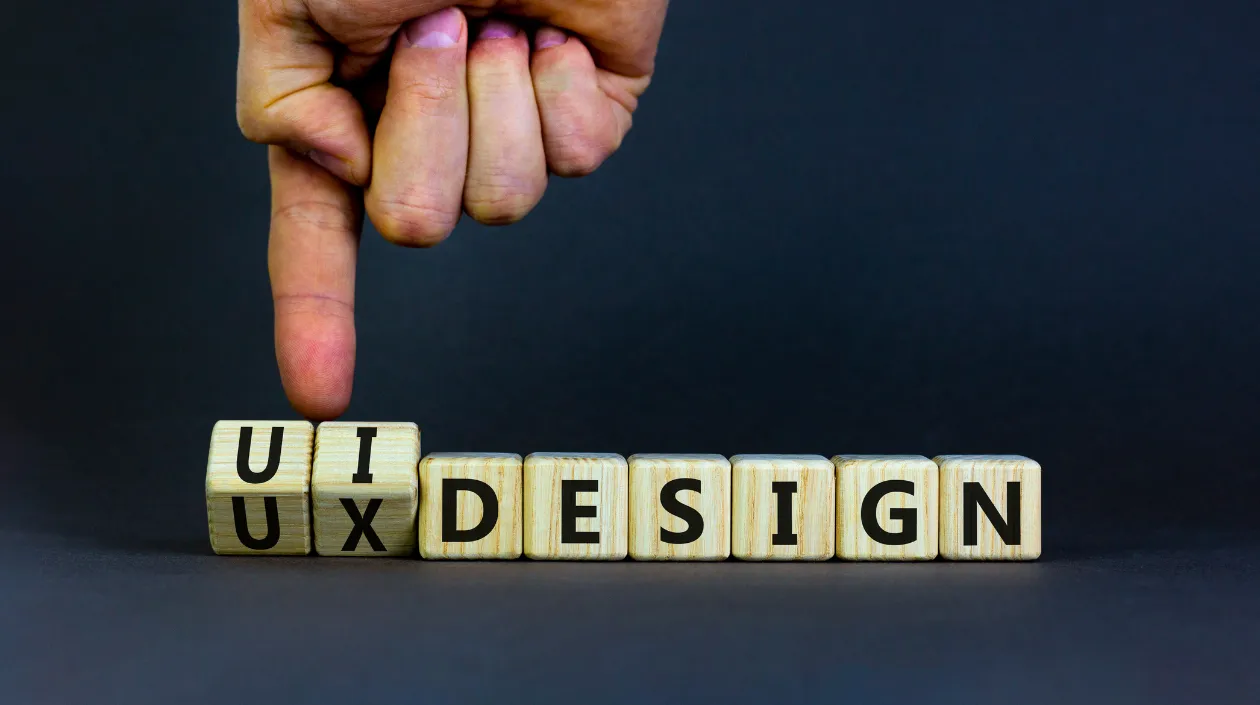Introduction: The Importance of User-Centered Design
In the world of web design, one of the most crucial principles to keep in mind is that a website should cater to the needs and expectations of its users. User-centered design (UCD) focuses on putting the user at the heart of the design process, ensuring that their experiences are intuitive, efficient, and enjoyable. UX (User Experience) and UI (User Interface) designers play a pivotal role in this process by translating user needs into functional, aesthetically pleasing websites.
In this blog, we’ll dive into the best practices for UX/UI designers to follow when creating user-centered websites that not only meet but exceed user expectations. From research and testing to design and implementation, these practices will help you deliver websites that provide a seamless, positive user experience.
1. Conduct Thorough User Research
The first step in creating a user-centered website is to understand your audience. Designing for a group of people without knowing who they are and what they need is a recipe for failure. UX/UI designers must conduct thorough user research to gather insights about their target users’ preferences, behaviors, and pain points.
How User Research Improves Design:
User Personas: Develop detailed user personas that represent the different segments of your audience. These personas should include demographic data, interests, goals, and challenges, which will guide design decisions.
Surveys and Interviews: Use surveys, interviews, or focus groups to gather direct feedback from real users. Ask questions that uncover their preferences, frustrations, and expectations when using websites similar to yours.
Analytics Review: Analyze data from your existing website (if available) to understand user behavior, such as the most common entry and exit pages, bounce rates, and time spent on key areas of the site.
By conducting proper user research, designers can build empathy for their users and make design decisions based on real-world data rather than assumptions.
2. Prioritize Usability and Functionality
While aesthetic design is important, functionality and usability are paramount. A user-centered website should be easy to navigate, intuitive, and functional. Users should be able to find what they need quickly and without frustration.
How to Enhance Usability:
Clear Navigation: Ensure that your website’s navigation is simple and easy to use. Group related content together and use familiar terminology so users can intuitively find what they’re looking for.
Consistent Design: Consistency in layout, fonts, colors, and button styles helps users become familiar with the interface, reducing cognitive load and making it easier to interact with the site.
Accessibility: Ensure your website is accessible to users with disabilities. Use appropriate contrast for readability, implement alt text for images, and design for keyboard navigation to ensure inclusivity.
Focusing on usability ensures that users can efficiently navigate the site and perform tasks like making purchases or reading content without obstacles.
3. Focus on Mobile-First Design
With mobile traffic surpassing desktop usage, a mobile-first approach is more important than ever. Designing for mobile first means that the design is optimized for smaller screens and will adapt gracefully to larger devices like tablets and desktops.
Why Mobile-First is Essential:
Responsive Design: Use responsive web design techniques that allow your website to adapt to various screen sizes, ensuring users have a consistent experience across devices.
Simplified Navigation: On mobile, space is limited, so it’s important to simplify navigation. Implement a hamburger menu, large tap targets, and easy-to-read text to enhance mobile usability.
Speed Optimization: Mobile users expect websites to load quickly, so optimizing images, reducing unnecessary elements, and compressing files is crucial for fast load times on mobile devices.
By prioritizing mobile-first design, you cater to the growing number of users accessing websites from their smartphones and ensure your website remains user-friendly across all devices.
4. Create a Seamless and Intuitive User Flow
User flow refers to the path that a user takes through a website to achieve a specific goal, such as making a purchase or signing up for a newsletter. A user-centered website should have a smooth and logical flow that minimizes friction and guides users toward their desired action.
Best Practices for Streamlined User Flow:
Clear Calls-to-Action (CTAs): CTAs should be prominent and easy to find, leading users through the conversion process. Use action-oriented language like “Shop Now” or “Sign Up Today” to guide users.
Logical Information Architecture: Organize content in a way that makes sense to users. Use categories and subcategories to group related information, and make sure that important content is easy to find.
Minimize Distractions: Keep users focused on their goal by minimizing unnecessary elements. Avoid cluttered pages with too many pop-ups, ads, or distracting features.
By designing a seamless user flow, you make it easier for users to complete their tasks, improving conversion rates and enhancing their overall experience.
5. Use User Testing and Feedback
No design is perfect from the start. User testing and feedback are essential to refining and improving the user experience. By testing designs with real users and gathering feedback, you can identify areas of improvement and make informed design decisions.
How to Implement User Testing:
Prototype Testing: Before launching a full website, test interactive prototypes with users. This allows you to observe how they navigate the site and identify usability issues early on.
A/B Testing: Run A/B tests to compare different versions of design elements, such as buttons, CTAs, or layouts. This helps you determine which version performs better with users.
Continuous Feedback Loops: Even after launch, continue gathering feedback through surveys, usability tests, or monitoring user behavior with tools like heatmaps or session recordings.
User testing ensures that you’re designing with real users in mind and allows you to continuously improve the website to meet user expectations.
6. Visual Design: Simplicity, Clarity, and Aesthetics
While usability and functionality are crucial, a website’s visual design should also be engaging. A clean, visually appealing website can build trust and create a positive first impression.
Best Practices for Visual Design:
Simple and Clean Layout: Keep the layout uncluttered and focus on the most important elements. Use whitespace effectively to create a balanced, readable design.
Consistent Visual Elements: Use consistent colors, fonts, and imagery that align with your brand and create a cohesive visual experience.
Typography for Readability: Choose fonts that are easy to read on both mobile and desktop devices. Consider font size, line spacing, and contrast to ensure text is legible.
A visually attractive website that’s easy on the eyes not only engages users but also contributes to a positive user experience that encourages them to stay longer on your site.
7. Ensure Fast Load Times
Website speed is a critical factor in user experience. Slow-loading pages can lead to frustration and higher bounce rates, particularly on mobile devices where users expect quick access to content.
How to Optimize Load Speed:
Optimize Images: Compress images to reduce file sizes without compromising quality.
Leverage Browser Caching: Use caching to store elements of your website in the user’s browser, speeding up load times for returning visitors.
Minimize JavaScript: Reduce the amount of JavaScript running on the page to improve load times.
Fast load times are essential for retaining visitors, reducing bounce rates, and keeping users happy.
Conclusion: Designing with the User in Mind
Creating a user-centered website involves much more than just aesthetic design. By focusing on usability, functionality, mobile optimization, intuitive user flow, and user feedback, UX/UI designers can craft websites that deliver outstanding experiences and meet the needs of their target audience.
By incorporating these best practices into your design process, you’ll not only create visually appealing websites but also ensure that users can easily navigate and engage with your site, ultimately leading to higher conversions, better customer satisfaction, and long-term success.
Transform Your Brand with Zolofox – Your Strategic Partner for Success
At Zolofox, we believe that a great brand deserves a powerful online presence. Our team of experienced designers, marketers, and strategists work closely with you to craft customized solutions that not only elevate your brand but also drive measurable results. Whether it’s through innovative branding, result-driven social media marketing, or seamless website design, we create experiences that captivate and convert.
We don’t just build websites or post on social media — we build brands that resonate, engage, and grow. Every strategy is tailored to meet your unique needs and business goals, ensuring your brand stands out in a competitive digital landscape.
Are you ready to elevate your business to new heights?
Let’s turn your vision into reality with the expertise of Zolofox. Contact us today for a free consultation and take the first step towards exceptional growth!



